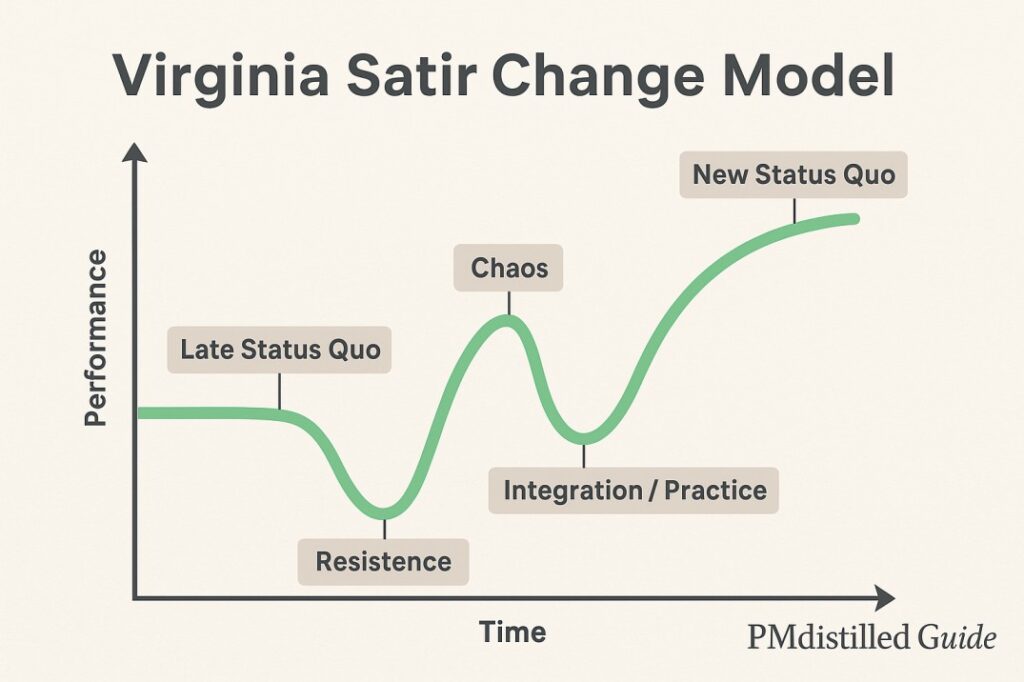
The Virginia Satir Change Model is a psychological model that describes how individuals and organizations respond to change, especially unexpected or disruptive change. Developed by family therapist Virginia Satir, it is widely used in organizational development, Agile coaching, and transformational leadership to understand emotional responses during transitions.
Five Stages of the Satir Change Model
| Stage | Description |
|---|---|
| 1. Late Status Quo | The current state. People are comfortable, routines are established, and change feels unnecessary or even threatening. |
| 2. Resistance | A foreign element (change agent, new process, or disruption) challenges the status quo. Emotional resistance (fear, denial, anger) arises. |
| 3. Chaos | The old system breaks down; people feel confused, unproductive, and unsure. Performance dips. This is the lowest point in morale and productivity. |
| 4. Integration / Practice | New learning begins. People experiment, adjust behaviors, and test the change. Some early success is seen. Confidence starts to grow. |
| 5. New Status Quo | The new way of working becomes normalized. Stability is regained, often with higher performance and improved morale compared to the original state. |
Key Insights
- Change is emotional, not just procedural.
- Productivity and morale often decline before improving.
- Support and leadership are most critical during the chaos phase.
- The model emphasizes the human side of change, unlike purely structural models like Kotter or Lewin.
